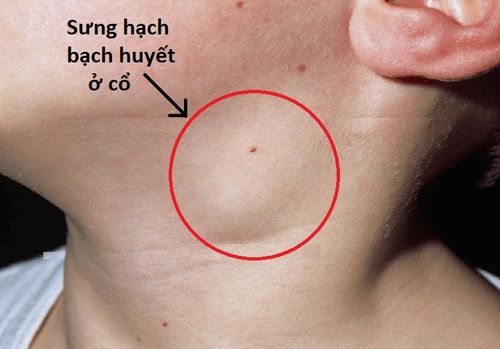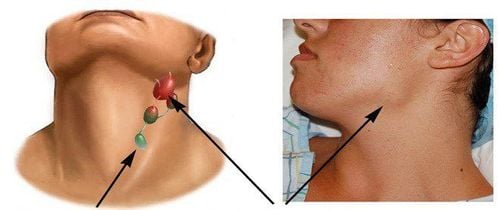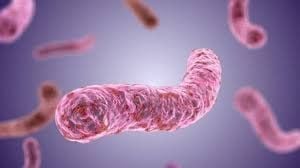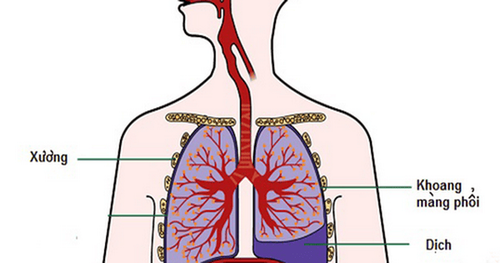The article was professionally consulted by Specialist level I MD Dong Xuan Ha - Department of Examination and Internal Medicine - Vinmec Ha Long International General Hospital.
Lymph node tuberculosis is one of the common tuberculosis diseases, occurring most often in children. Unlike pulmonary tuberculosis, lymph node tuberculosis is not contagious and treatment is much easier and simpler.
1. Lymph node tuberculosis is a non-contagious disease and easy to treat
Lymph node tuberculosis is a non-contagious disease. Lymphatic tuberculosis is different from pulmonary tuberculosis in that it does not spread to people around through contact because this bacteria only resides and develops in the lymph nodes, not erupting outside.
Compared to other forms of tuberculosis, lymph node tuberculosis is much easier and simpler to treat. Treatment time can last from 4-7 months depending on the condition of the disease. In cases where patients with lymph node tuberculosis have lymphadenopathy, non-suppurative, mobile and localized, excision can be carried out for treatment.
Lymph node tuberculosis in children is easily cured if treated properly with physical therapy and hygiene. Lymph node tuberculosis in children should not be removed early because the lymph nodes play a role in protecting the body and preventing the invasion of tuberculosis bacilli.
To prevent lymph node tuberculosis, the best way is to improve the body's resistance, avoid chronic lymphadenitis that lasts for a long time, creating conditions for tuberculosis bacilli to invade and cause disease. It is also necessary to practice oral hygiene, extract and treat cavities early for children. When diagnosed with lymph node tuberculosis patients need to comply with treatment as prescribed by a tuberculosis specialist, combine improving physical condition with a good diet and reasonable rest.

2. Pathways of tuberculosis bacilli invasion
Tuberculosis bacilli have 4 pathways to invade the body and cause lymph node tuberculosis:
- Tuberculosis bacilli invade the lungs enter the blood and then reach the lymph node tissue and cause lymph node tuberculosis
- Tuberculosis bacilli can directly enter the lymphatic system through tuberculous lesions in the oral mucosa or from infections common lesions due to trauma.
- Tuberculosis bacilli can pass through the oral mucosa into the lymph node tract (primary lymphadenopathy) and can also enter the lymphatic system through the oral mucosa without causing any pathology.
Thus, the route of invasion of tuberculosis bacilli is often due to systemic tuberculosis infection, causing lymphadenitis in many places.
3. Progression and symptoms of Lymph node tuberculosis
In lymph node tuberculosis, the patient will see one or a group of lymph nodes on the body swollen, appearing in large numbers in the neck with the following characteristics:

- Lymph nodes are palpable without the patient knowing the time of onset.
- Lymph nodes gradually swell without causing pain, of firm density, and smooth surface
- The skin area where the lymph nodes are swollen is not hot and red.
- Swollen lymph nodes often appear in clusters or chains.
- Sometimes there is only one swollen lymph node in the neck area, without other cardinal inflammatory signs.
Tuberculosis lymph nodes develop through the following 3 stages:
- Early stage
The lymph nodes begin to swell, with nodes of varying sizes that are not yet attached to the skin, making them easy to mobile. - Later stage
This stage progresses to lymphadenitis and inflammation of the surrounding lymph nodes. During this time, the lymph nodes may become fused in clusters, which could be either attached to the skin or neighboring tissues. If they are attached, it may restrict mobility. - Softening stage
The lymph nodes gradually soften, the skin around the lymph nodes begins to swell and redden but is not hot and not painful. When the lymph nodes have become abscessed, fistulas can easily break if left untreated, and they may take a long time to heal. The opening of the fistula will be purple, forming keloids, wrinkles, white bumps or fibrous ligaments.
In general, during the process of tuberculous lymphadenitis, the patient's health is normal, except in cases of secondary infection or accompanied by pulmonary tuberculosis lesions, bone lesions, etc.

In particular, in the form of tumors (hypertrophic tuberculous lymphadenitis), symptoms are very rare: A tumor appears in the neck, one or several enlarged lymph nodes, then sticks together into a large, painless, mobile mass, without inflammation around the lymph nodes, and are firm to the touch. The lymph node tumor gradually grows larger, occupying almost the entire side of the neck, causing other lymph nodes (under the jaw, parotid, etc.) to also enlarge. The tumor is located on one side or both sides, making the neck appear to be stretched out.
4. Disfferenting between lymph nodes and lymph nodes tuberculosis
Normally, the body's lymph nodes are very small, only as big as a grain of rice, a bean, or a small corn kernel. Soft lymph nodes are located in the surrounding tissues, in the underlying fat tissue or the muscle fibers making them difficult to detect.
When the lymph nodes can be felt, it means they are swollen. If the lymph nodes are swollen, hot, red, painful to the touch, try antibiotics. If the swelling and pain subside and the size becomes smaller, it is lymphadenitis due to bacterial infection.
If the lymph nodes are hard, growing rapidly in both quantity and quality, feeling like lead bullets, spreading like roots this could be lymphoma or a secondary cancer spreading to the lymph node.
If the lymph nodes are swollen occasionally and sometimes painful, it may indicate lymphadenitis caused by a common bacterial infection.
If the lymph nodes grow slowly, are not painful to the touch, are soft and tense, then it could be lymphadenitis.
Thus, lymph node tuberculosis is not transmitted through contact with the surrounding area, and is quite easy to treat, but it needs to be treated early and completely to avoid possible complications.
To arrange an appointment, please call HOTLINE or make your reservation directly HERE. You may also download the MyVinmec app to schedule appointments faster and manage your reservations more conveniently.














